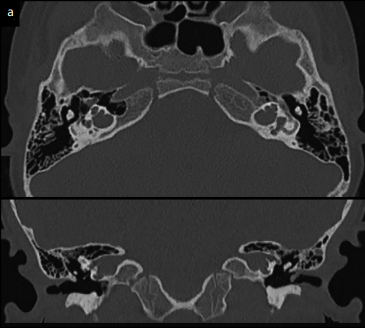Abstract
OBJECTIVES: This study aims to compare the electrical auditory brainstem response (EABR) following cochlear implant (CI) surgery in pediatric subjects with cochlear malformation and a normal cochlea, in order to assess the sensitivity of EABR and to evaluate the surgery outcome.
MATERIALS and METHODS: A total of 26 pediatric subjects who were deaf and scheduled for CI surgery were enrolled into this case control study. Group A (n=20) included subjects with a normo-conformed cochlea. Group B (n=6) included subjects with cochlear malformation. Subjects were evaluated with EABR immediately (T0) and 6 months (T1) post-CI surgery. The EABR Waves III and V average amplitude and latency were compared across time, separately for each group, and across groups, separately for each time.
RESULTS: Auditory brainstem response (ABR) could only be recorded in Group A. We were able to record EABR from all subjects at T0 and T1, and waves III and V were present in all the recorded signals. There were no statistically significant differences between T0 and T1 in EABR Waves III and V in terms of average amplitude and latency in neither group. When comparing Groups A and B, the only statistically significant difference was the average amplitude of wave V, both at T0 and T1.
CONCLUSION: EABR is a valid tool to measure the auditory nerve integrity after CI surgery in patients with a normal and malformed cochlea, as shown by its ability to measure waves III and V when ABR is absent. The EABR testing should be performed before and after CI surgery, and EABR should be used as a measure of outcome, especially in patients with a malformed cochlea.
Cite this article as: Di Stadio A, Dipietro L, De Lucia A, Trabalzini F, Ricci G, Martines F, et al. E-ABR in Patients with Cochlear Implant: A Comparison between Patients with Malformed Cochlea and Normal Cochlea. J Int Adv Otol 2019; 15(2): 215-21.


.jpg)
.png)
.png)
